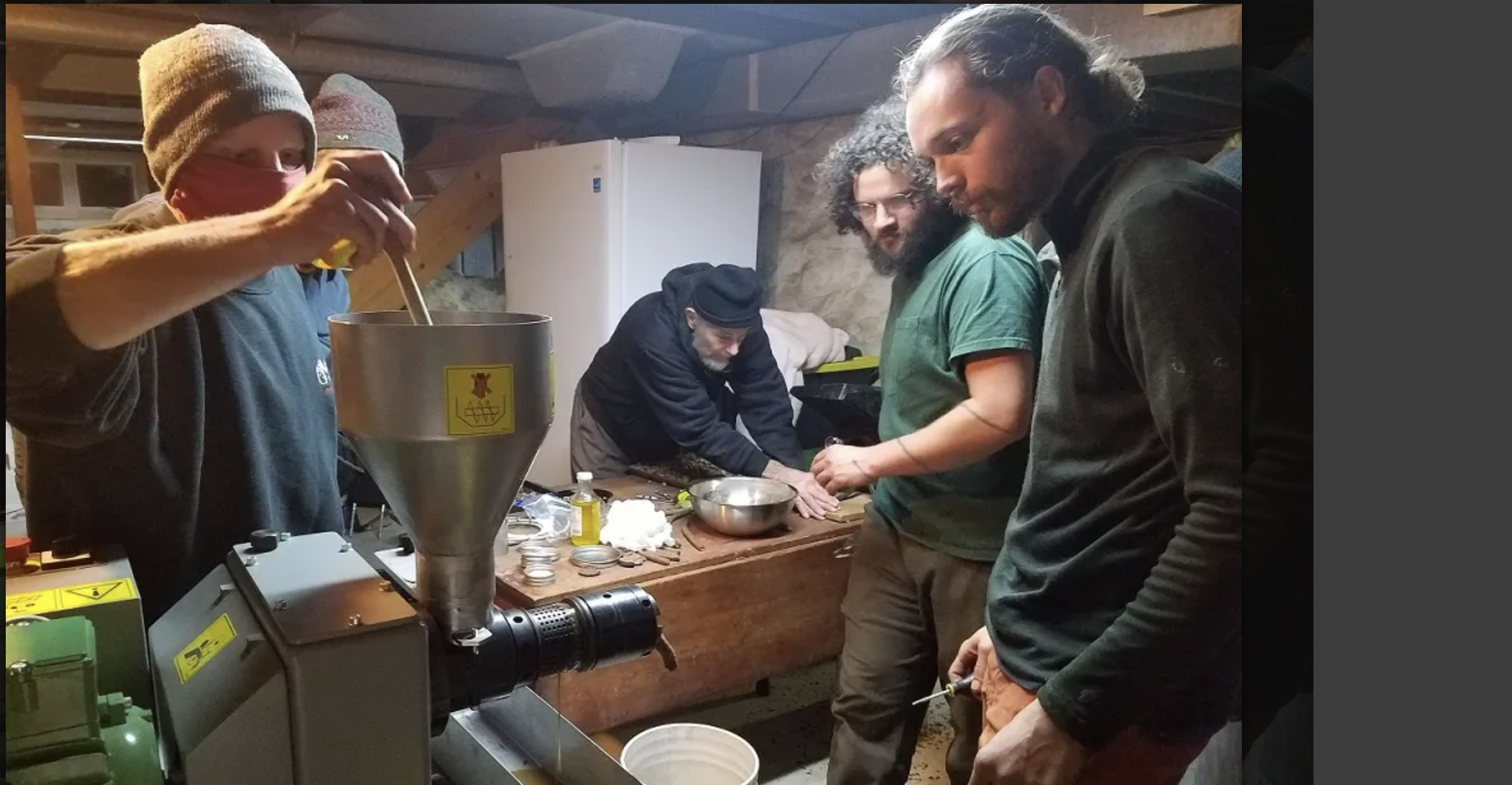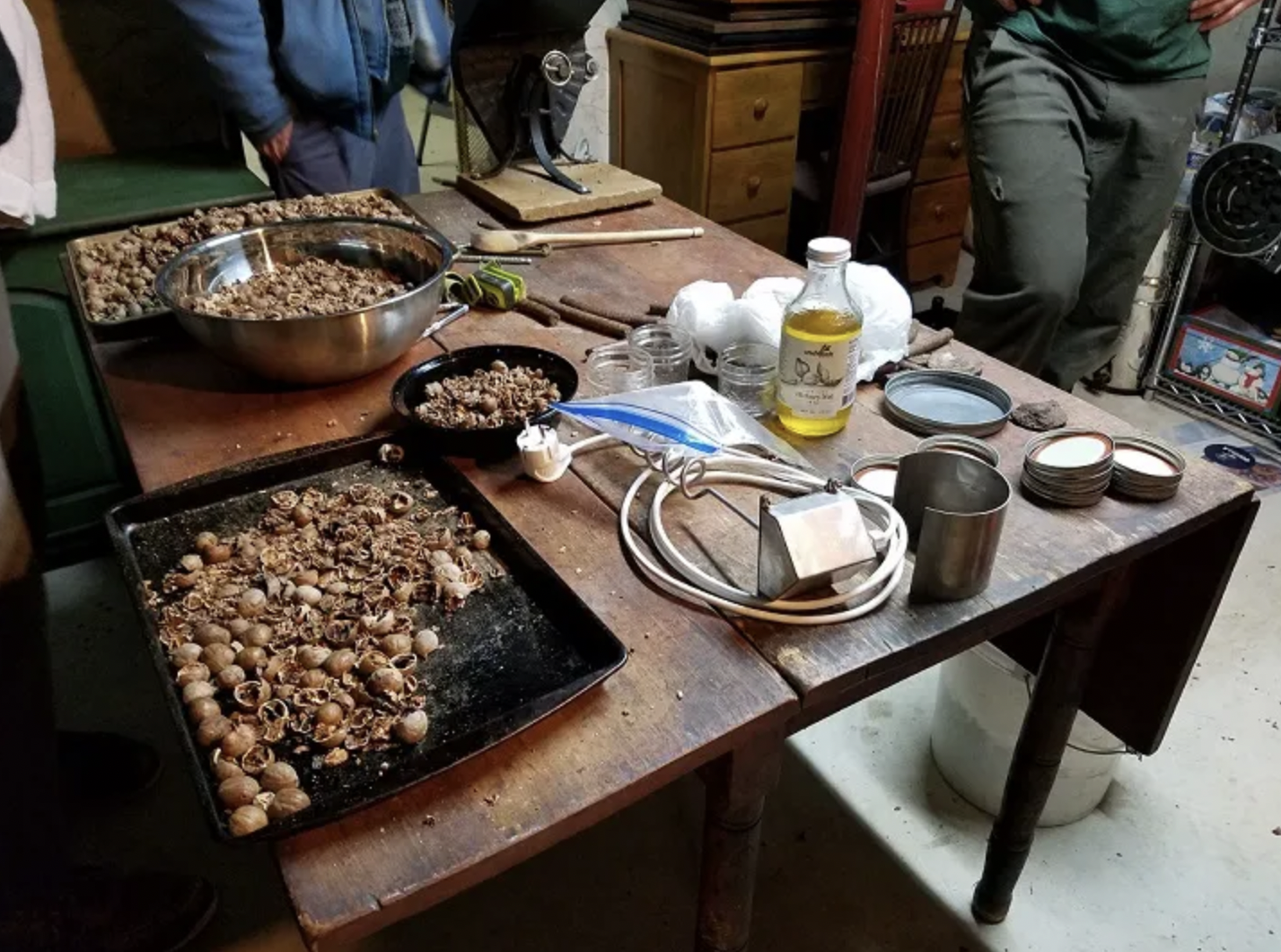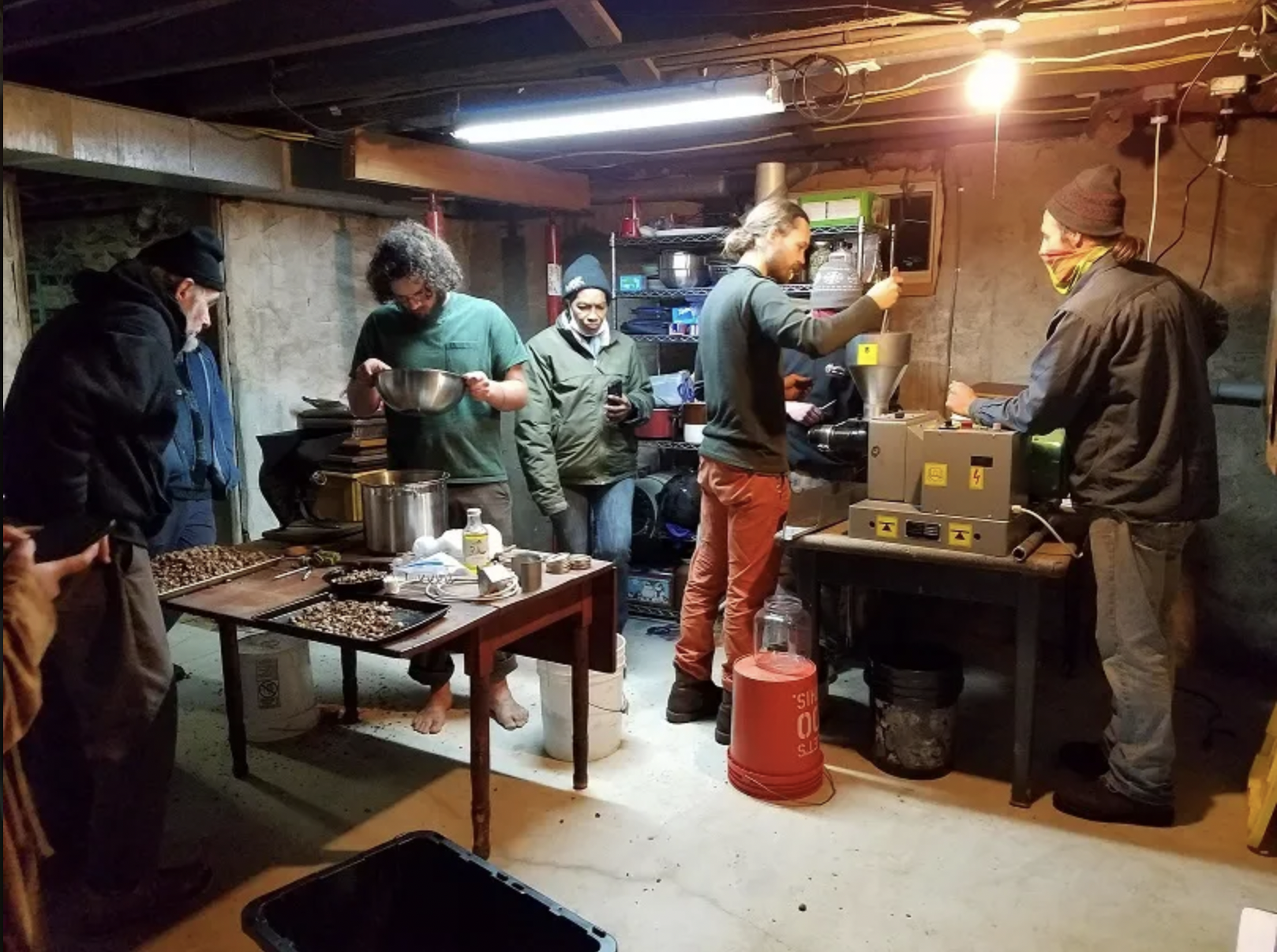Nut Harvesting and Processing
How do all of those glorious nuts make it from tree to plate? That is a very big question that SilvoCulture has been diving into.
In Fall of 2020, we organized our first Chestnut Harvest at a local 60-year-old orchard that has received little care in the last decade or more. The harvest was part research – to see what yields such an orchard would have and to identify successful genetics for further development. As well as an opportunity to test out a system of harvesting, hot water dunking, drying, and storing. SilvoCulture organized volunteers to harvest the nuts using nutwizards and kept them separated by tree. They then transported the nuts to Longcreek Homestead where they entered the hot water dunker – a propane-powered system built to heat the nuts at 120 degrees F for about 20 minutes. This kills the weevil pests which would otherwise eat up a large portion of the crop in storage. The nuts were then dried on stacked screens over a box fan, then stored in a refrigerator to be taste-tested and to try various shelling, roasting, cooking, and dehydrating techniques.
From 2022-2025, SilvoCulture mapped existing orchards in Maryland, creating a “nutwork” of growers, and built a wood-burning smoker to process chestnuts. Watch the video below to learn more and to get involved.

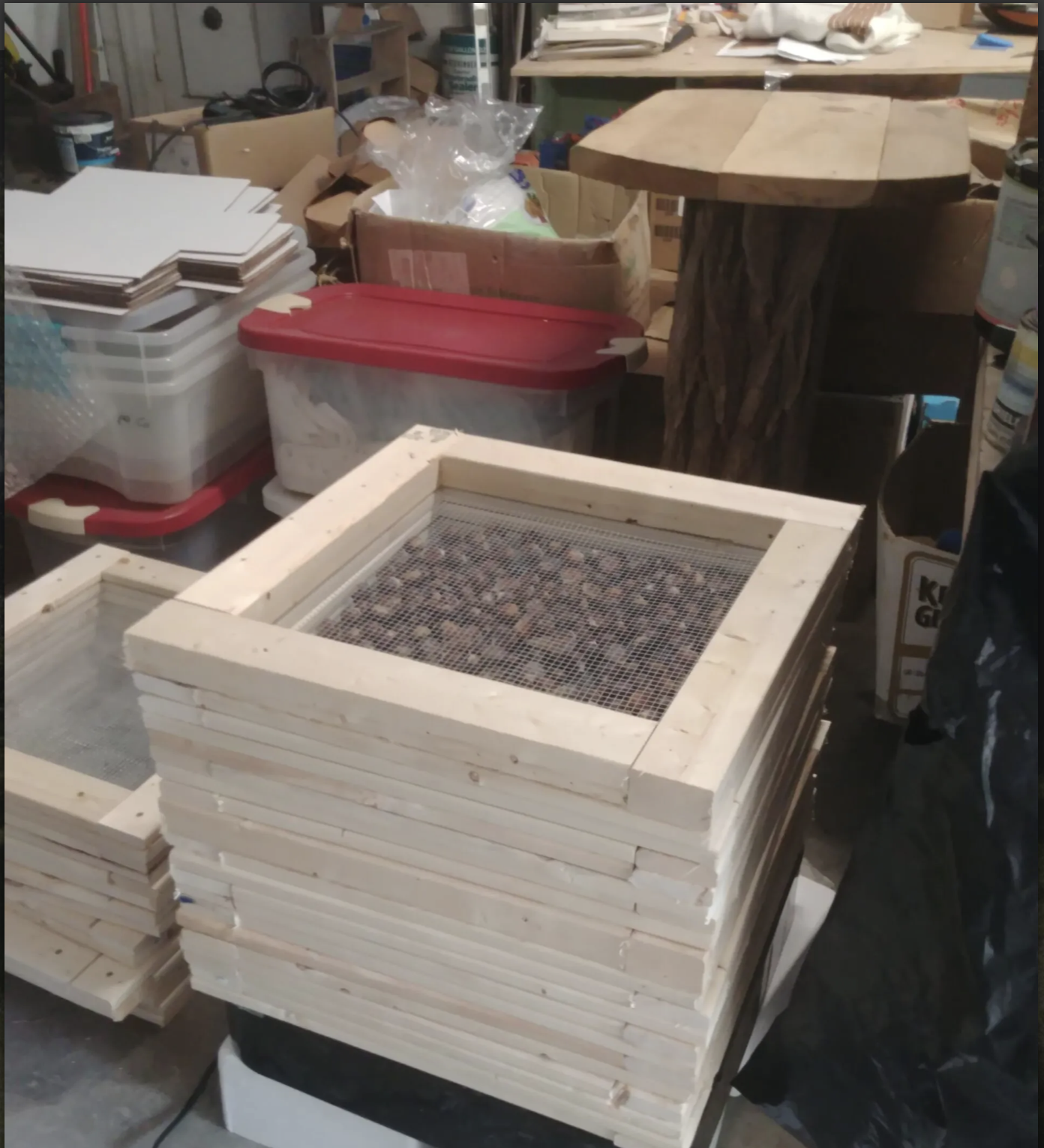
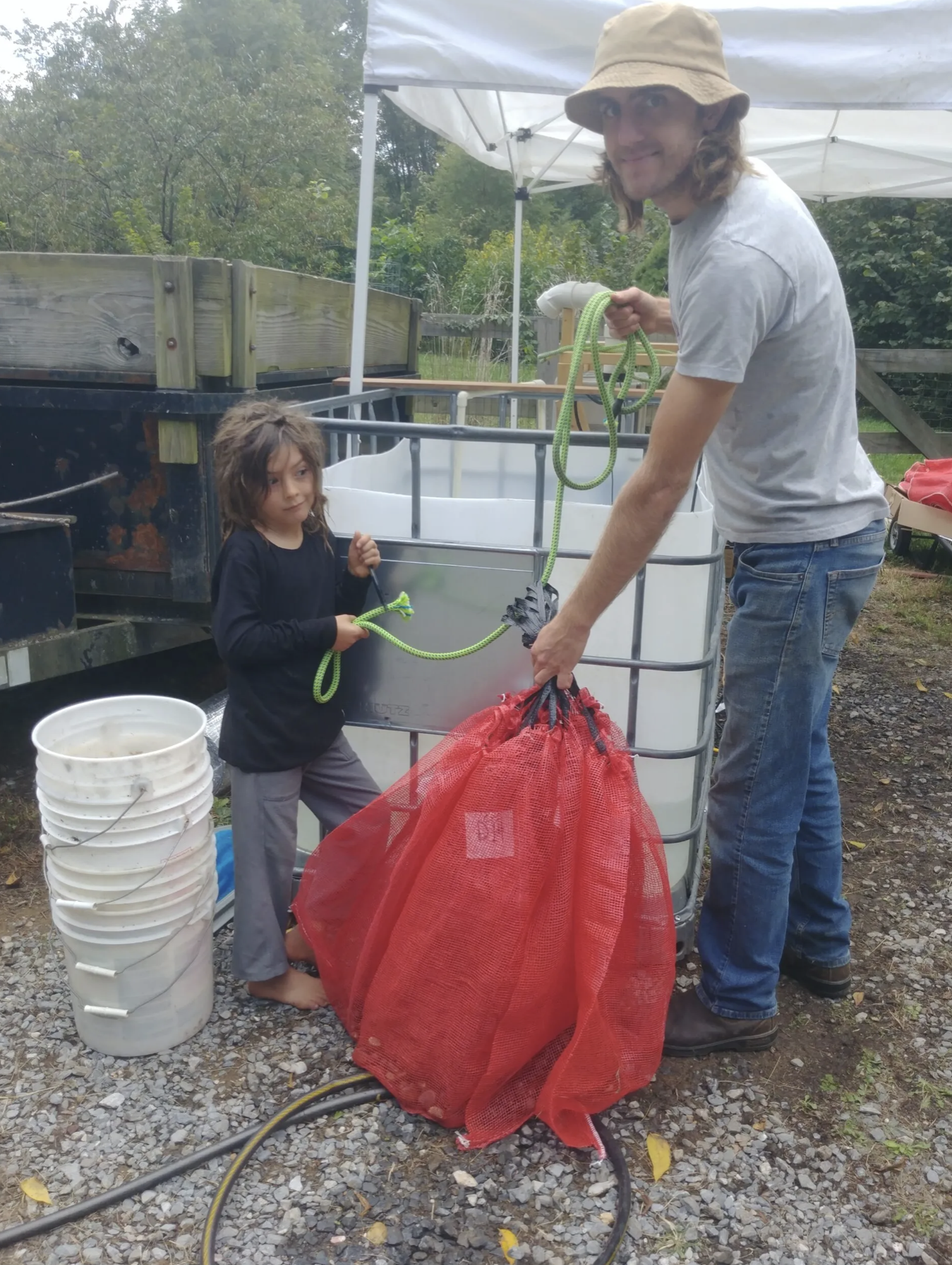
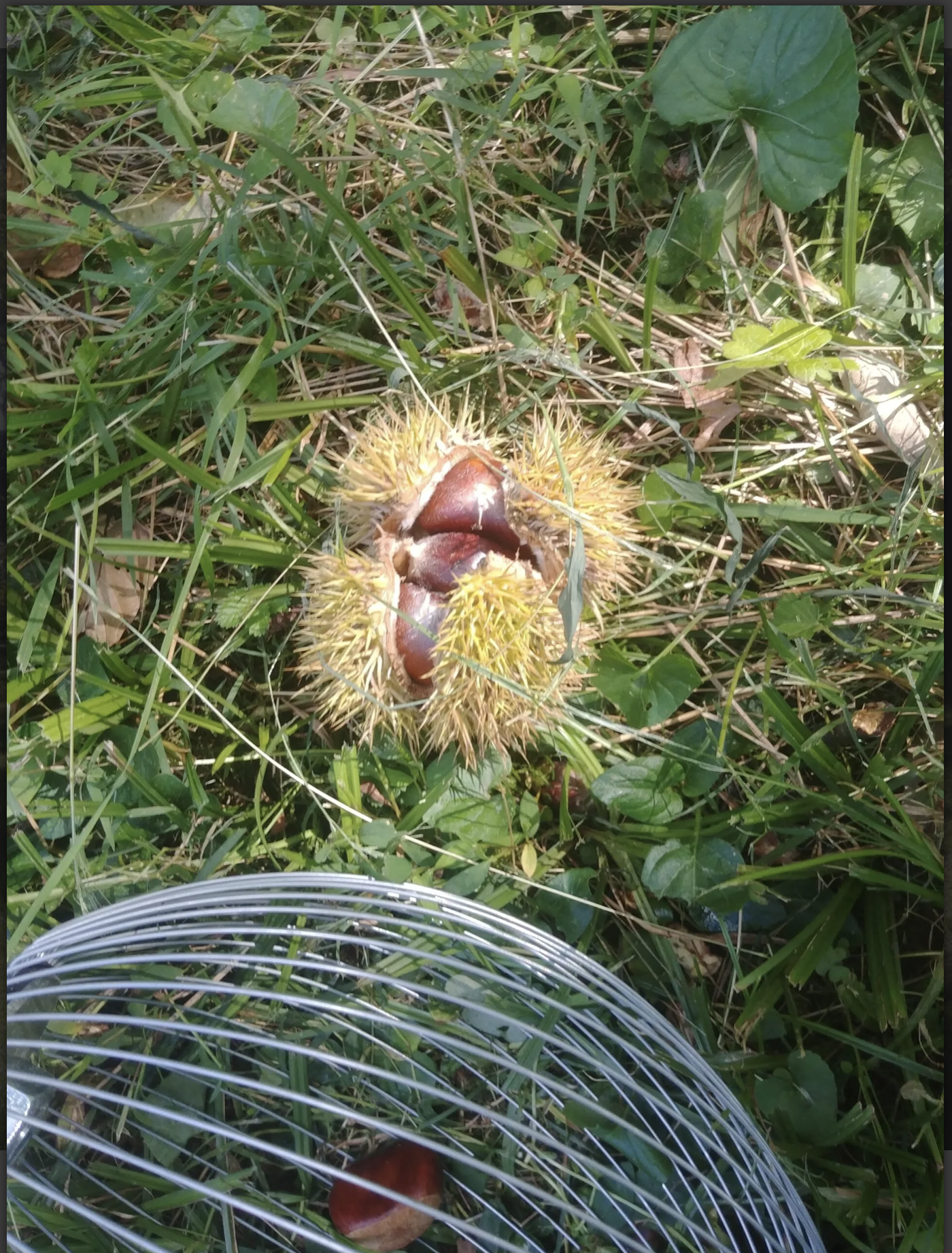
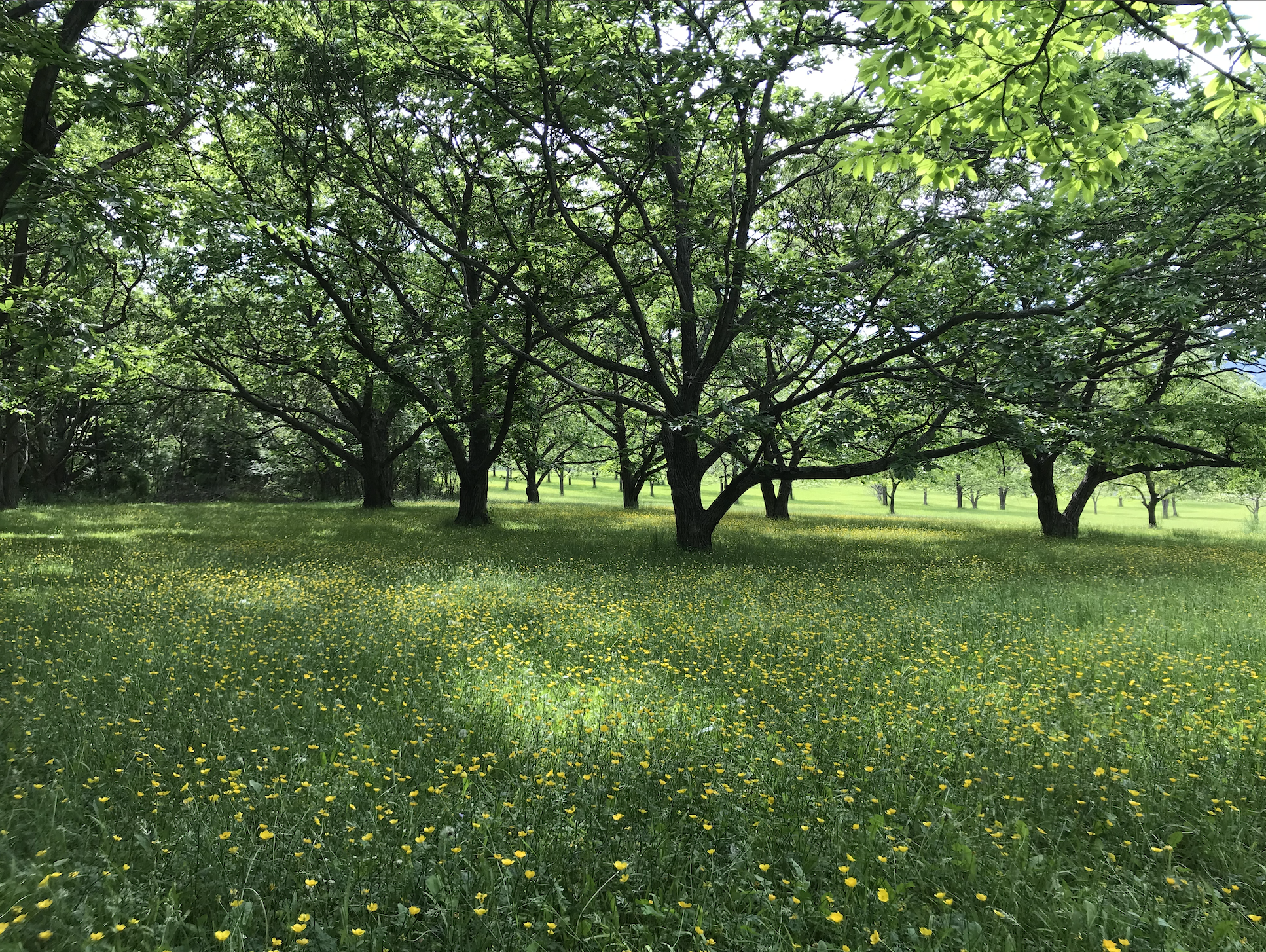
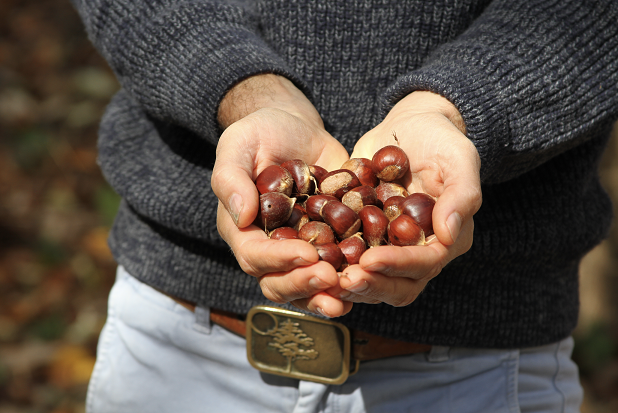
Then there are the high-oil nuts, walnuts and hickories, which require a different harvesting and processing approach. In Fall of 2020, SilvoCulture organized a harvest of black walnuts from a couple of different sites and experimented with various de-hulling techniques, looking for what makes the most sense to scale up for the future. Currently, one method that seems to be working best for black walnuts is one that includes adding the nuts to a bin of water, agitating with a drill powered paint mixer, then separating out hulls from nuts and washing, such as this system from EdibleAcres. From there, the nuts (still in shell) need time to dry on screens before cracking. It is at this point that many people will store the nuts. But to move beyond that, you got to get the nuts out of the shell! We have been using a Hunts Electric Cracker, a great piece of equipment for reliable nut cracking. From there, nuts are ready to be consumed or ready for oil production. This year, we’re borrowing a Hammermill from a nutty friend. This or the hand-crank Davebilt nut cracker can be used to pulverize the nuts to a workable consistency (note – it’s said that some varieties of hickory can be hammermilled without being shelled then pressed for oil; this is something we will be able to experiment with).
In December 2020, we teamed up with partners from Keystone Tree Crop Cooperative to use our new KK20 oil press for pressing bitternut hickory nuts. We yielded close to 2 gallons of beautiful oil which tastes like nutty butter!
There are quite a few steps from the nut at the base of the tree and a beautiful walnut oil or hickory nut oil (or even just a nice walnut or hickory nut out of the shell)! We hope to continue to understand each step more fully, and find the most efficient processes. Below see photos from the December pressing.
Watch the process in action!
